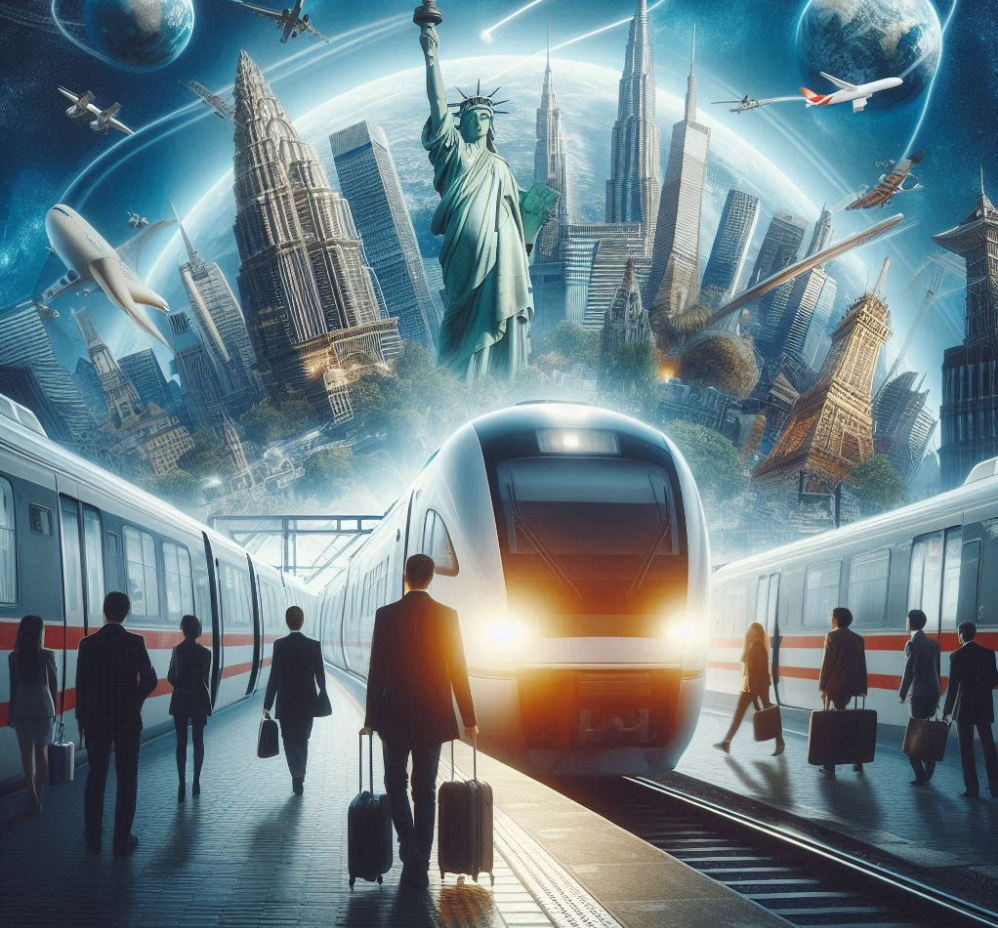
Jumping into public transportation in a foreign city can feel like a wild ride. Every city has its quirks, and getting to know public transport modes like buses, metros, and trams is key. In some places, metro systems dominate, while others might rely more on buses or trams to get around.
Think of major cities like New York with its sprawling subway network or Amsterdam, where hopping on a tram is just part of the daily routine. Seeing how public transportation works in different countries can really open your eyes to the local way of life. Plus, it’s often cheaper and faster—why pay for a cab when a subway ride gets you there quicker?
First things first: get familiar with the basic terminology. Knowing what each line is called and recognizing key symbols on signs can save you a lot of hassle when navigating a new transit system. Most cities use similar symbols for important things like exits and transfers, but it’s always good to check a guide for local nuances.
Using public transportation abroad not only helps you get around but lets you immerse yourself in the local culture too. Imagine people-watching on Tokyo’s bullet trains or standing shoulder to shoulder with commuters in Mumbai—it’s a slice of real life you can’t get from a tour bus. Plus, mastering local transit can make you feel like a true local even if your stay is short.
Pre-Trip Preparation: Essential Tools and Resources

Got your travel plans sorted? Time to tackle the prep work that’ll make navigating foreign city transport a breeze. Grabbing the right tools can transform potential travel stress into a laid-back experience.
First up, let’s talk about apps. Seriously, don’t underestimate how helpful they are. Apps like Google Maps and Citymapper become your best travel buddies, offering real-time updates and nifty routes to get you from A to B without any fuss. Some cities even have specific apps for their transport systems, so snag those before you hit the road.
Dive into the websites of the city’s public transport; some sites offer e-tickets that save you queuing time. Look for options that suit tourists—multi-day passes can often be a big money-saver. Ever heard of tourist cards? They sometimes offer unlimited travel for a set number of days. Cha-ching!
Downloading maps before you go is a game-changer. Offline maps keep you sane when Wi-Fi is elusive. Trust me, having that digital crutch when you’re crossing unfamiliar districts is like a breath of fresh air.
Don’t overlook the power of the internet’s tribal knowledge. Browse travel forums and join online communities where fellow travellers share their experiences and advice. Find out what worked for other folks and avoid their mistakes. It’s like having a secret weapon in your travel arsenal.
First-Hand Experience: On-the-Ground Navigation Techniques
Stepping out into new streets with a pocketful of excitement and maybe a sprinkle of nerves? It’s thrilling tackling a foreign city’s transport maze in the flesh.
Getting a grip on local signs and maps helps you find your way around. Each map layout and sign can look different from what you’re used to, so spend a moment getting acquainted with them. Hunt down an orientation point on maps—like a prominent landmark or metro station—that helps you place yourself.
Don’t shy away from language apps, which can be lifesavers. Sometimes, all it takes is a simple phrase in the local lingo to score you the right help or find the right track. Plus, locals appreciate the effort, even if your pronunciation is a little wobbly.
Ticketing systems can baffle even seasoned travellers. Look out for ticket machines that might require you to validate your ticket before or after boarding. Cuing up to buy a ticket at a machine or counter? Take a moment to observe others and pick up some tips before it’s your turn.
Etiquette on public transportation can vary widely. In Japan, it’s all about silence and respect for personal space, while in Italy, chatting might be more commonplace. Watch and learn from locals to fit right in and make your ride as smooth as pie.
Cranking up your confidence is part of the adventure. Get comfy with new commuting styles by hopping on and off a few times to get the hang of it. Before you know it, you’ll be darting through transport hubs like you’re born to it.
Overcoming Challenges: Dealing with Common Public Transport Issues
Every journey has its bumps, and mastering public transportation abroad is no exception. But fear not, a few simple tricks can help you handle common hiccups like a pro.
Delays and overcrowding can be frustrating. A zen mindset and a good podcast can be a lifesaver during these moments. Keep an eye on real-time apps for updates to plan your next move accordingly.
Staying safe should always be top priority. Keep an eye on personal belongings and avoid displaying flashy valuables. In case of crowded spaces, a money belt under your clothes or an anti-theft backpack can provide peace of mind.
Dealing with night-time transit? Stick to well-lit areas and busy stations. Some cities have night buses or trams that offer safe late-night rides, so check if that’s a thing where you’re traveling.
If you face unexpected surprises like a cancelled ride, don’t hesitate to ask for help. Most big stations have information desks where English-speaking staff can assist you. Fellow commuters can be a good source of help too—never underestimate the kindness of strangers.
Sustainable Travel: Making Environmentally Friendly Choices

When traveling abroad, opting for public transport isn’t just savvy for your wallet—it’s a win for the planet. Public systems generally have a much lower carbon footprint compared to renting cars or taking taxis.
Some cities are leading the charge with cool eco-initiatives. Think electric buses in London or high-speed trains across Europe that whisk you away in comfort while caring for the environment. These cities aren’t just moving people; they’re pushing forward sustainability.
Using public transport can also bring you closer to the city’s heartbeat. Whether you’re riding a streetcar or hopping on a local ferry, you touch on experiences that are wholly unique. It’s these moments that stick with you long after your travels end.
By choosing public transit, you’re supporting global efforts towards cleaner air and reduced emissions. It’s travel with a cause, without sacrificing convenience or adventure.
Travelers can up their sustainability game by choosing off-peak times to ride, which helps ease congestion and spreads demand. Supporting initiatives like bike-share programs can add a layer of fun while minimizing your environmental footprint.
